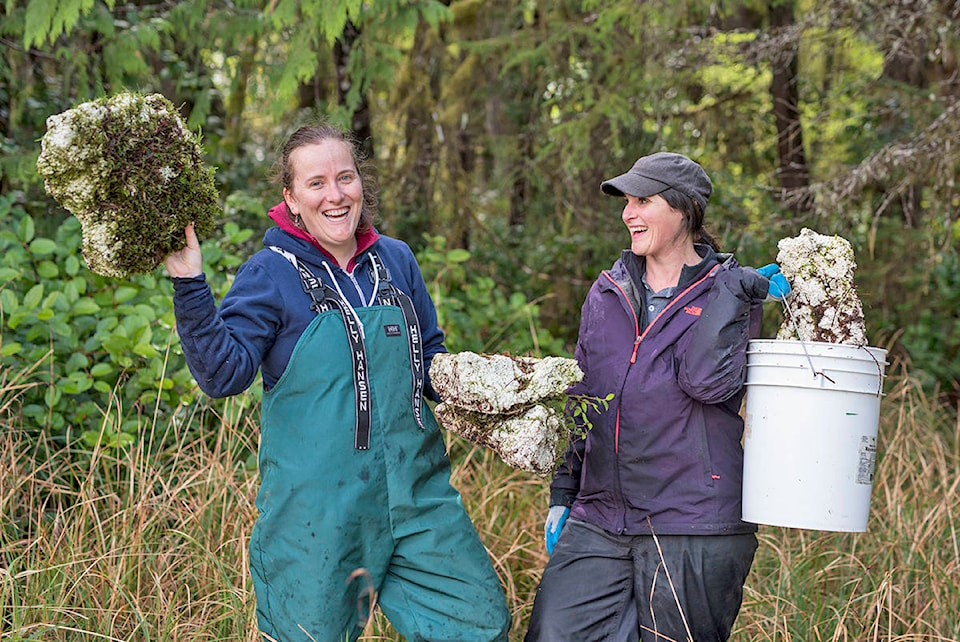SAMUEL HOFFE
Special to the Westerly
Community volunteers and conservation professionals alike flocked together Saturday morning in an effort to remove plastics and other debris from a stretch of shoreline bordering the Tofino Botanical Gardens.
The event precedes the annual arrival of tens of thousands of migratory shorebirds, the largest migration of wildlife in the region. The Tofino Mudflats, an internationally recognized birding hot spot, are an important stopover point for many migratory bird species.
Volunteers braved rain and muck to scour the shoreline collecting garbage and, in many cases, removed large pieces of debris from the adjacent forest. Notable finds included a couple of light bulbs, dozens of spent shotgun shells and a fire extinguisher.
John Morris, the event’s organizer, said that a lot of the debris rides the high tide and settles in the forest, often hidden from view.
“Our first impressions are that it looks pristine, it looks beautiful, but as we start to dig deeper, we really start to see that it’s not,” Morris said. “It all comes down to our consumption. Plastic itself is a very useful substance but our single use nature and the disposability of it is what we really need to address.”
Morris also stressed that single use plastics and other synthetic waste have adverse, and tangible effects on our ecosystems, citing shorebird deaths due to entanglement and plastic ingestion.
“I’ve got a photo, for example, of a killdeer nest I took last year and it built its nest using marine debris, there’s pieces of foam,” he said. “These birds shouldn’t be using plastic and marine debris to build their nests. What’s the trickle down effect as well? You think of the food chain: if it’s going into the fish, which the birds or the other sea life are eating, which then ultimately we’re eating too, so we’re ingesting some of that plastic.”
Morris pointed out that small, informal efforts also help make a difference in combating plastic pollution and bringing more awareness to the issue.
“After a surf, on your way out, as you’re walking back, pick up a piece of garbage. You don’t have to pick it all up, but pick up one piece and throw it in the bin. Other people watch that and then they start to think, ‘If he can do it, I can do that too.’ It doesn’t have to be an organized event, we can make small impacts on our own as well.”
When asked about the prospect of introducing legislation to address plastic waste, Morris said that for him, education remains the most powerful tool.
“I’d like to see more legislation, yes, in particular around certain items. Ultimately though, it’s education. Education is one of our most powerful tools for positive change,” he said.
“If we can make more people aware about the problem and the effect it has, and hopefully change people’s ideas around single use plastics and the disposability of it. There’s power in numbers.”
For those looking to learn more about shorebirds and their habitats, the Tofino Shorebird Festival kicks off on the evening of May 3. The three-day event, facilitated by Raincoast Education Society, is aimed at celebrating these spring migrations with a series of guest lectures, birding workshops, boat trips and more.
READ MORE: Surfrider Pacific Rim: On protecting Canada’s Oceans this World Oceans Day
READ MORE: VIDEO: Surfrider Foundation invites Tofino council candidates to cigarette butt cleanup
READ MORE: Tofino Shorebird Festival ready for flight
